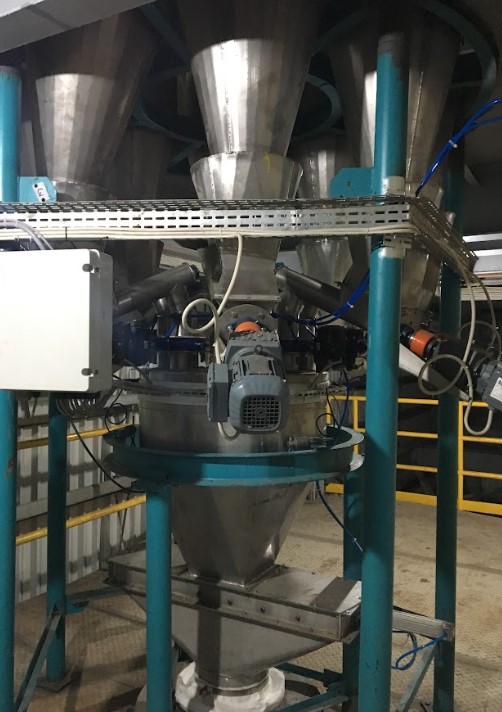Ingredient selection plays a crucial role in feed formulation, directly impacting nutritional value, palatability, and overall feed quality. Feed manufacturers must carefully evaluate various ingredients to meet specific nutritional requirements of target livestock or poultry species. Proper ingredient selection optimizes feed performance, maximizes animal growth and productivity, and enhances operational profitability.
The selection process involves balancing cost, availability, and nutritional value. Feed formulators must consider nutrient composition, digestibility, and potential anti-nutritional factors to create well-balanced, effective feed rations. This requires deep understanding of animal nutrition and the ability to identify high-quality, reliable raw material sources.
Key Factors in Ingredient Selection
When choosing ingredients for feed formulation, manufacturers consider several important factors:
Nutrient composition: The specific nutrient profile of each ingredient is crucial, as it determines the overall nutritional value of the feed. Manufacturers must carefully balance proteins, carbohydrates, fats, vitamins, and minerals to meet the dietary needs of the target animal species.
Digestibility: The ease with which animals can break down and absorb nutrients from an ingredient is vital for feed efficiency. Highly digestible ingredients ensure that animals can extract maximum nutritional benefit, leading to better growth and performance.
Anti-nutritional factors: Some ingredients contain compounds that can interfere with nutrient absorption or even harm animal health. Manufacturers must identify and minimize these factors to ensure the feed is safe and effective for consumption.
Availability and cost: The consistent supply and affordability of ingredients are essential for maintaining stable feed production. Manufacturers must balance nutritional quality with economic feasibility to create cost-effective feed formulations.
Quality control: Rigorous testing and quality assurance measures are necessary to ensure ingredient safety, consistency, and nutritional value. This includes monitoring for contaminants, verifying nutrient content, and maintaining proper storage conditions.
By evaluating these factors, feed manufacturers can select suitable ingredients for creating well-balanced, highly effective feed formulations.
Common Feed Ingredients
The animal feed industry uses a wide range of ingredients to meet diverse nutritional requirements:
- Cereal grains (corn, wheat, rice, barley)
- Protein sources (soybean meal, fishmeal, animal by-products)
- Fats and oils (vegetable oils, animal fats, specialty lipids)
- Vitamins and minerals
- Additives (enzymes, probiotics)
The specific combination and proportion of these ingredients vary based on target animal species, production goals, and local market conditions.
Quality Control in Ingredient Selection
Maintaining robust quality control is crucial in the ingredient selection process. Feed manufacturers must implement rigorous testing protocols to ensure raw materials meet necessary standards for safety, purity, and nutritional value. This includes:
Regular nutrient analysis: Frequent testing of ingredients to verify their nutritional content is essential. This ensures that the feed maintains its intended nutritional profile and meets the specific requirements of the target animals.
Contaminant screening: Thorough checks for harmful substances like mycotoxins, pesticides, and heavy metals are critical. This step safeguards animal health and prevents potential food safety issues in the final animal products.
Supplier audits: On-site inspections and evaluations of ingredient suppliers are necessary to verify their production practices and quality standards. These audits help maintain a reliable supply chain and ensure consistent ingredient quality.
Comprehensive traceability systems: Implementing detailed tracking methods for all ingredients from source to final product is crucial. This system allows for quick identification and resolution of any quality issues, enhancing overall feed safety and reliability.
Prioritizing quality control minimizes safety risks, ensures consistent feed performance, and maintains customer trust.
Feed Mill Construction in the Philippines
The Philippines has seen increased demand for high-quality animal feed due to growing livestock and poultry sectors. This has led to a surge in modern feed mill construction designed to meet evolving industry needs.
State-of-the-art feed mills in the Philippines feature advanced technology and machinery to optimize production processes, from raw material handling to final product storage and distribution. Stringent quality control measures, including on-site laboratories and rigorous testing protocols, ensure feed meets high safety and nutritional standards.
Challenges and Considerations
Feed mill construction in the Philippines involves several key considerations and challenges:
- Site selection
- Regulatory compliance
- Automation and technology integration
- Workforce development
- Supply chain management
Addressing these challenges requires a comprehensive approach combining technical expertise, strategic planning, and deep understanding of local market conditions.
Benefits of Investing in Well-Designed Feed Mills
Investing in modern, well-designed feed mills offers numerous benefits for manufacturers in the Philippines:
- Increased production capacity
- Improved feed quality
- Enhanced operational efficiency
- Competitive advantage
- Regulatory compliance
By investing in well-designed feed mills, manufacturers in the Philippines can position themselves for long-term success and meet evolving needs of the country’s thriving livestock and poultry sectors.
Conclusion
Feed formulation and feed mill construction are critical aspects of the animal feed industry in the Philippines. By carefully selecting ingredients, implementing stringent quality control measures, and investing in modern feed mill facilities, manufacturers can produce high-quality, nutritious feed to support the country’s growing livestock and poultry sectors. As the industry continues to evolve, staying informed about the latest trends and technologies in feed formulation and mill construction will be essential for maintaining a competitive edge in this dynamic market.

